GERALD PENKLER’S FASCINATING SMALL STREAM FLY SELECTION
Text and photographs of flies by Gerald Penkler
(Gerald Penkler is a highly respected young fly fisher living in the Western Cape where he puts in hours on the mountain streams in this part of the world. As you will see, he has a very innovative approach to fly patterns.
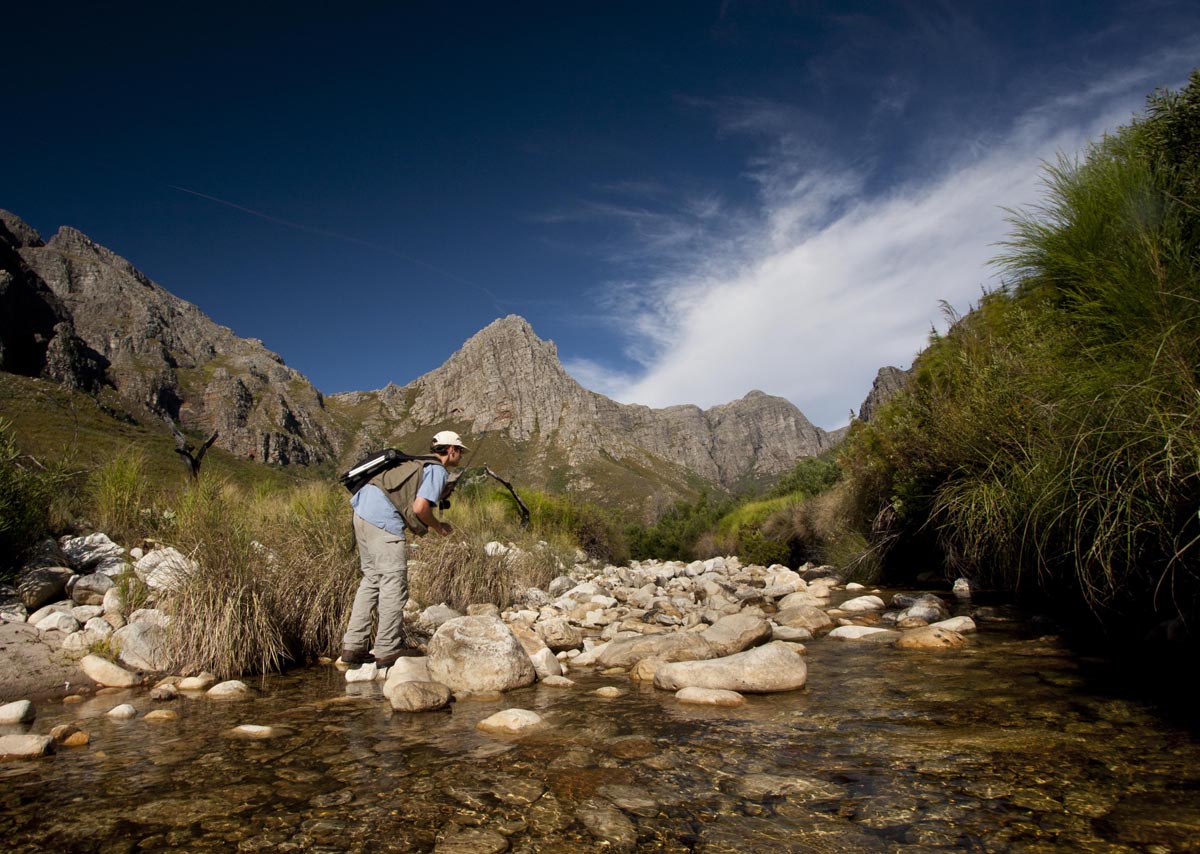
Gerald on a Cape stream (Tom Sutcliffe photo)
Tom Sutcliffe )
Mini RAB
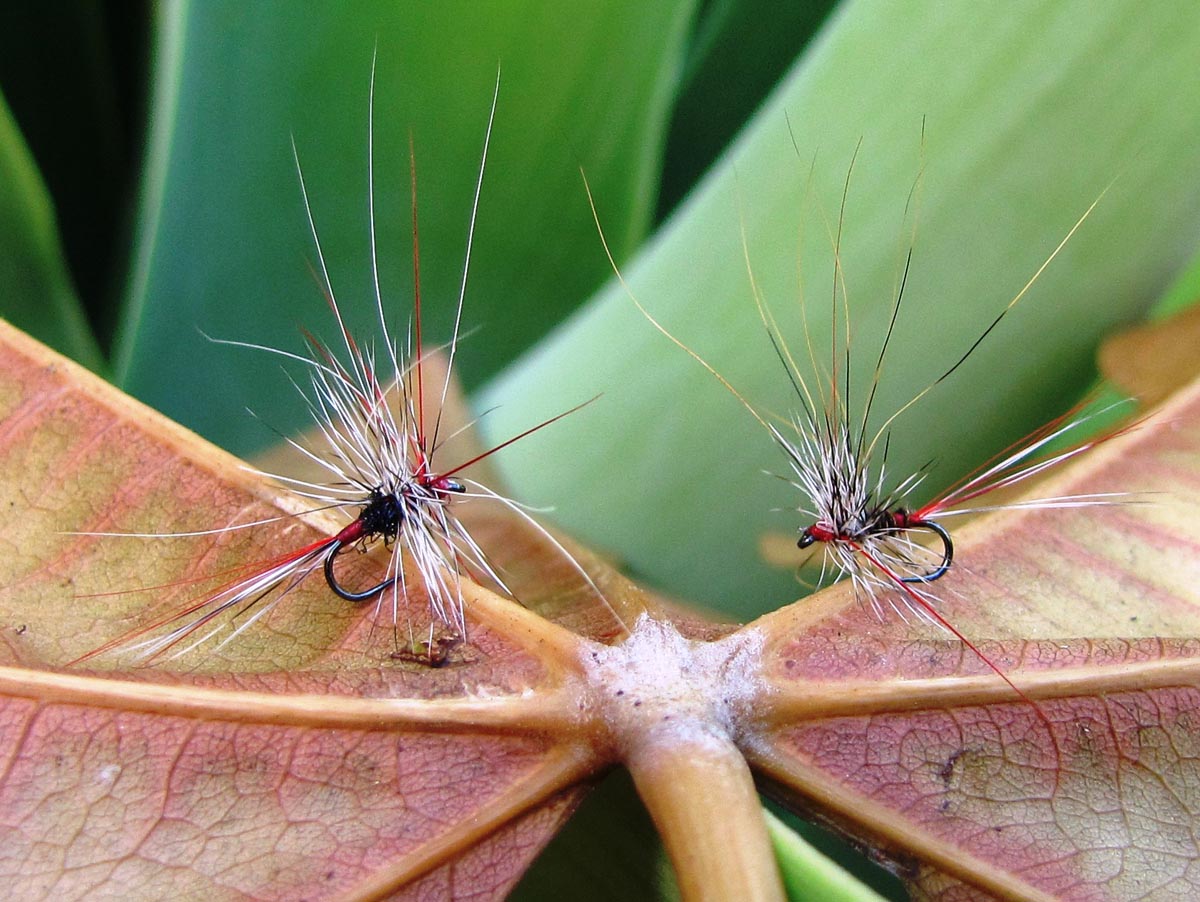
I love RABs that are the size of small rabbits, twist leaders and never land where you would like. While these have their place, I find myself more often than not switching to my mini-RAB in #18 - #20. These are not typical RABs with their overly long hackles. The long tail remains, but for the collar I use a genetic hackle of more classical proportions and tie in a few legs and red hackle strands. The end result is a RAB that handles wind superbly, does not twist tippets and excels in faster and slower water (tied more sparsely). For late season, my box always has a few drab coloured variations with Adams style upright wings.
Leggy CDC & Klip
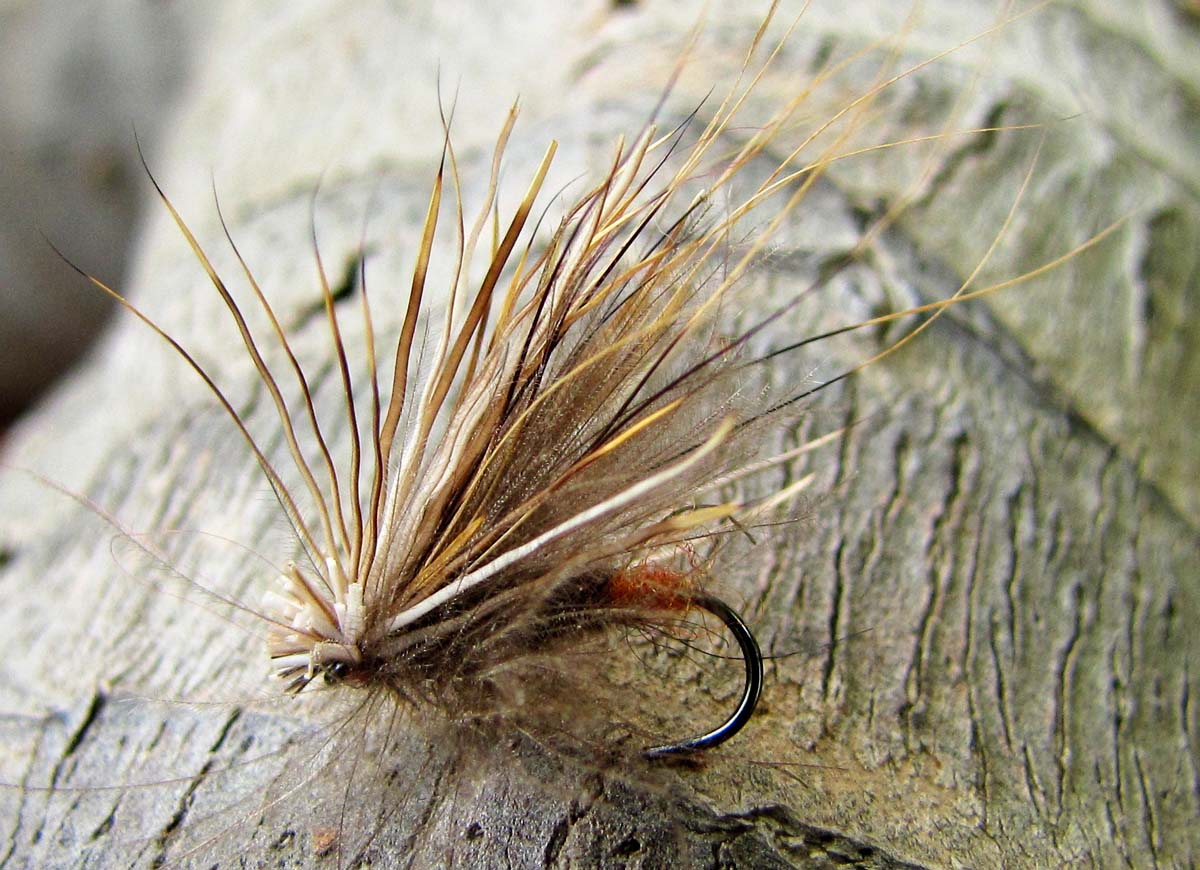
The leggy CDC and klip is my number one searching pattern. It is suggestive of a caddis, grasshopper or crane fly. The klipspringer wing flares somewhat more than elk hair and together with the CDC its bulk suggests a rather sumptuous dinner. This pattern has two more triggers with the addition of a small orange hotspot at the tip of the abdomen and squirrel hair legs for that extra bit of extra movement. Although this pattern is extremely effective, I have been baffled on more than one occasion when a hackled body instead of the CDC has taken more fish.
CDC Mayfly
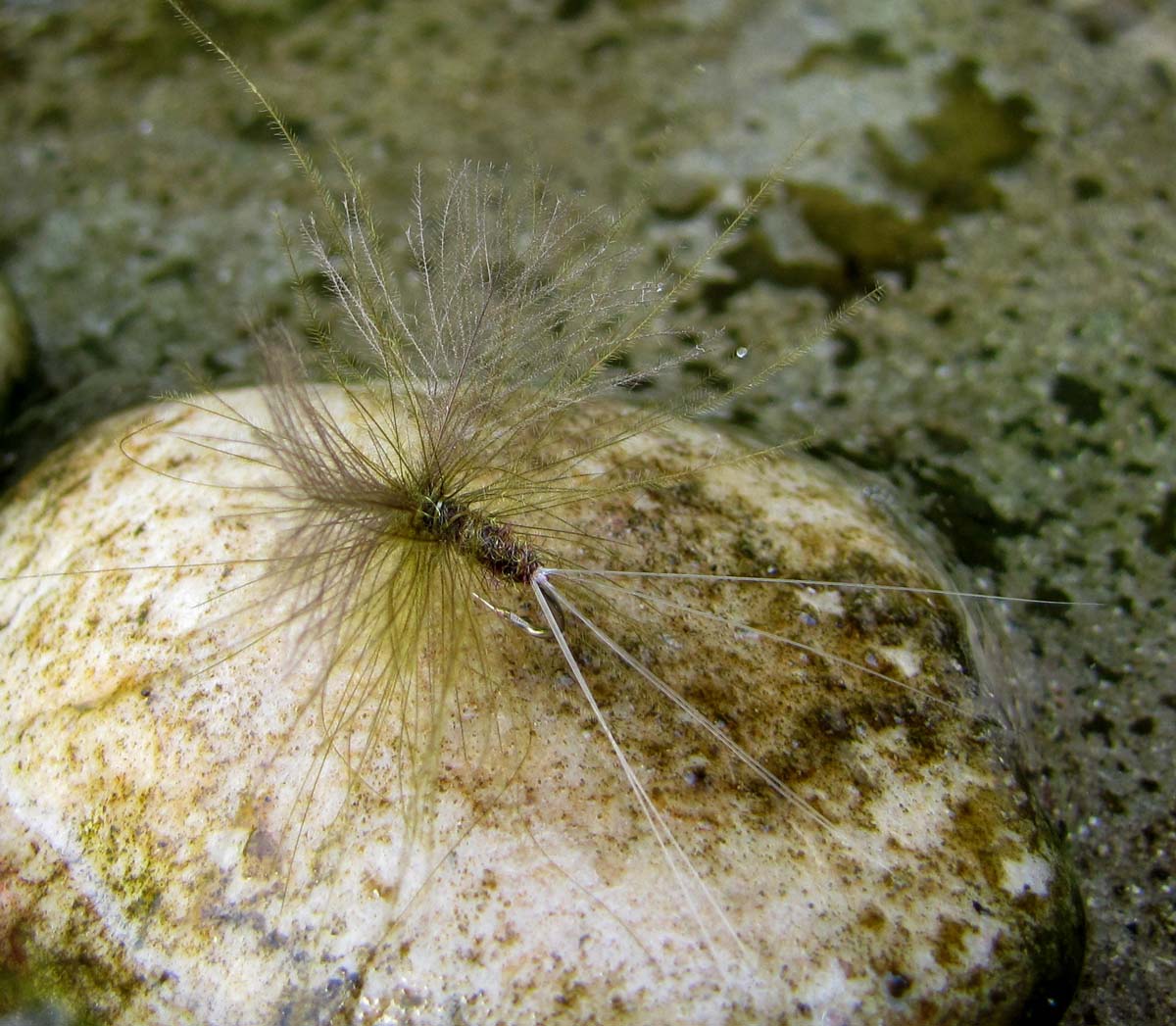
In black, tan and olive this pattern has accounted for several incredibly picky fish. It is tied fairly sparsely and has become my go to fly for those irritatingly picky fish sitting in clear glassy pools. Tying this pattern can be a bit laborious, but I have found that a dubbing loop treated with a faint amount of wax from a ‘wax strip’ is extremely effective at holding the CDC or any other fibres one wishes to add. By chopping off tail and pruning the wings a bit, this pattern becomes a fairly effective emerger – a useful feature if one were limited to a mere six patterns.
Parachute Hare’s Ear CDC Para RAB (“Choco”)
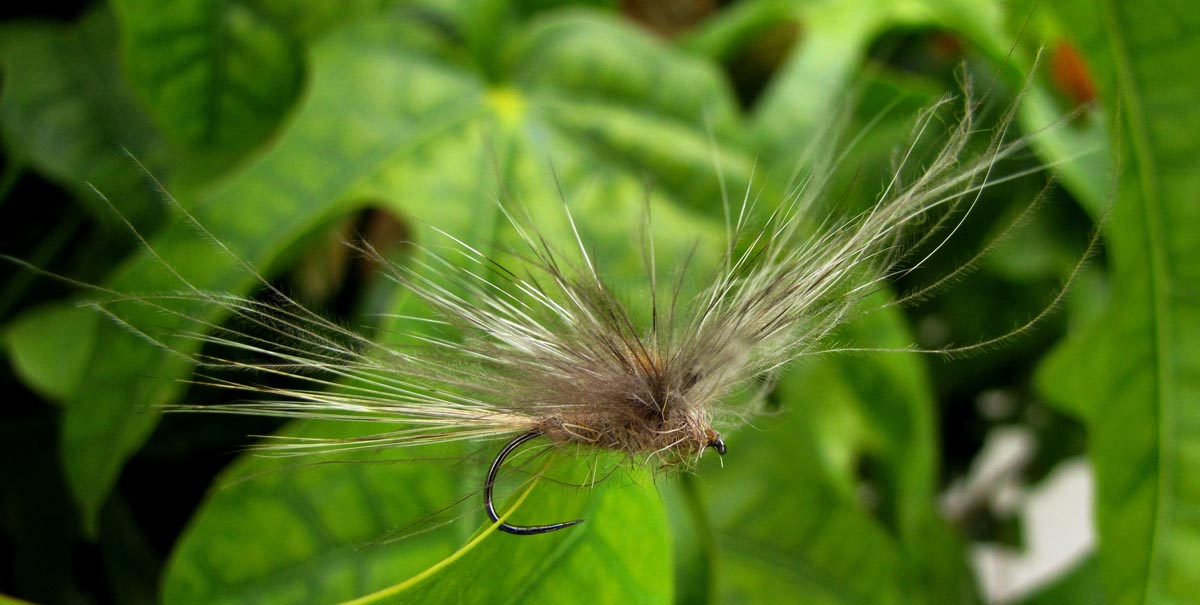
From the side and (below) from the top
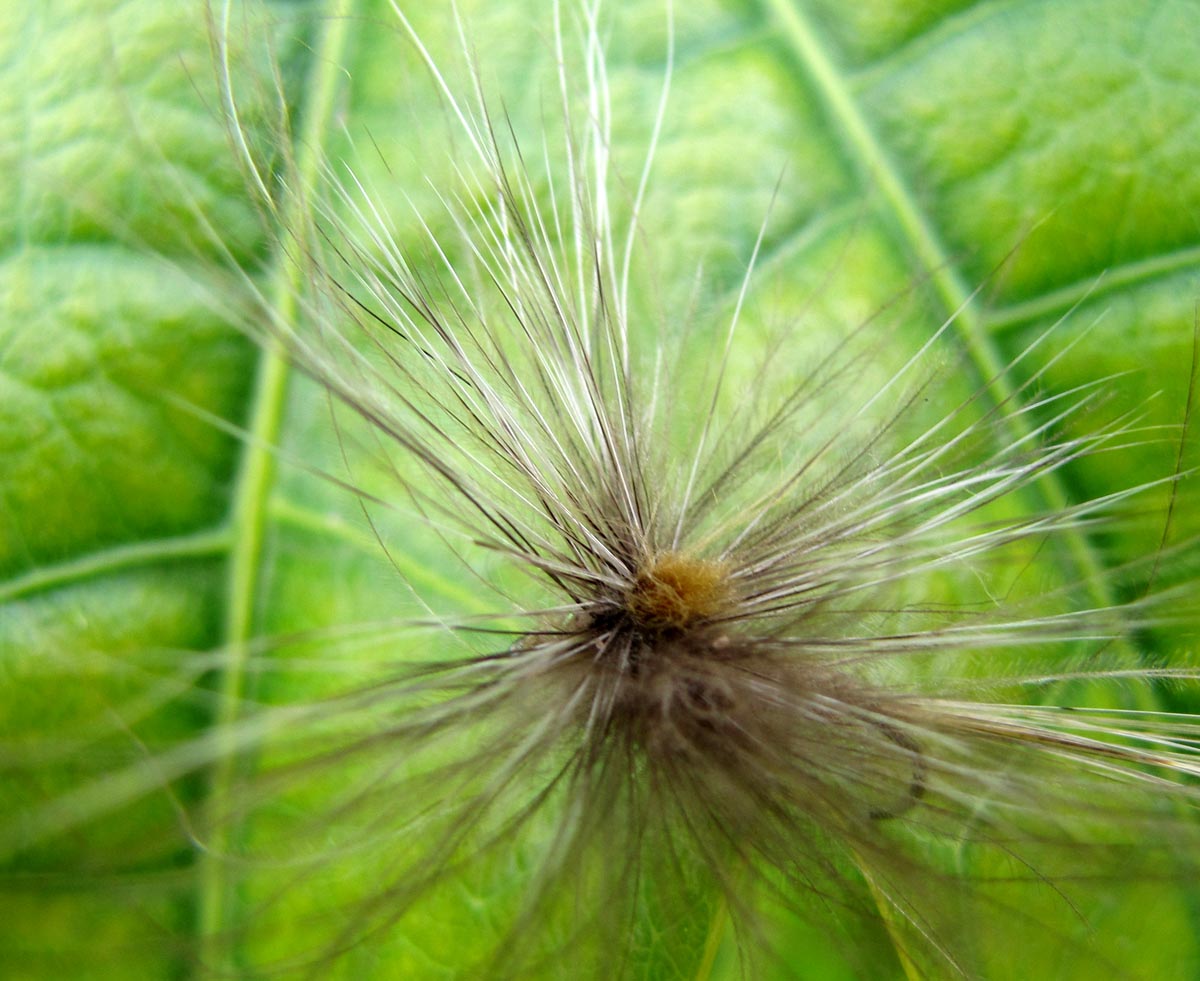
If brown trout were human and this fly was a chocolate Lindor ball, the effect would be the same. They travel great distances to intercept it, give it the once over remarking how extraordinarily creamy and tasty it is going to be, wolf it down and then regret eating it so quickly. In my early fly tying years, I wanted to tie a parachute hare’s ear. Lacking genetic hackle, I used random chicken feathers that I found on the farm. The end result was, in essence, an archaic parachute RAB. Most of my patterns include legs and CDC. This is no different. After ten years of refinement in technique and materials as well as critical feedback from numerous fish, I have settled on this Parachute Hare’s Ear CDC RAB – or more simply named “Choco”. This is not only a small stream fly and recently, Leonard Flemming had a number of notoriously finicky New Zealand browns sipping it, including one in excess of 10lbs.
PTN Variation
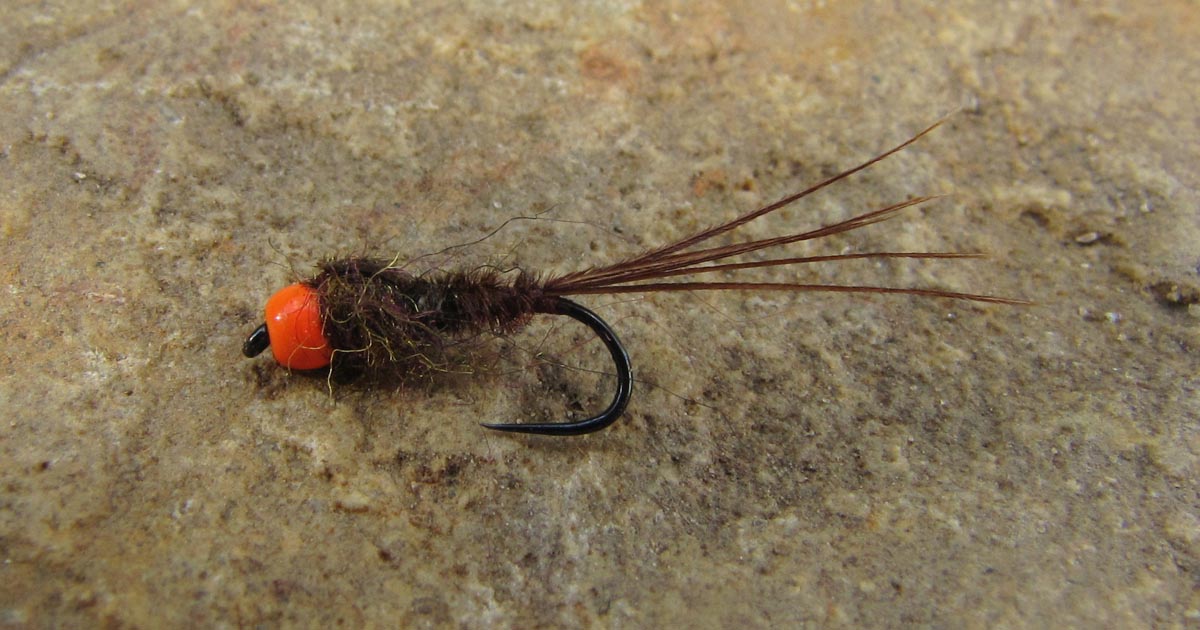
I tie these with either a black, hot orange or no bead and it has fooled kurper, carp, smallmouth, largescale and clanwillian yellowfish as well as sawfin and trout. Probably a few juvenile bass and bluegill in the mix as well. If fish are a bit more aggressive the orange is incredibly effective, but late season the black or beadless varieties are more productive. Simple to tie and by having a range of thorax colours, most of our mayflies can be imitated rather effectively.
Soft Hackle Brassie
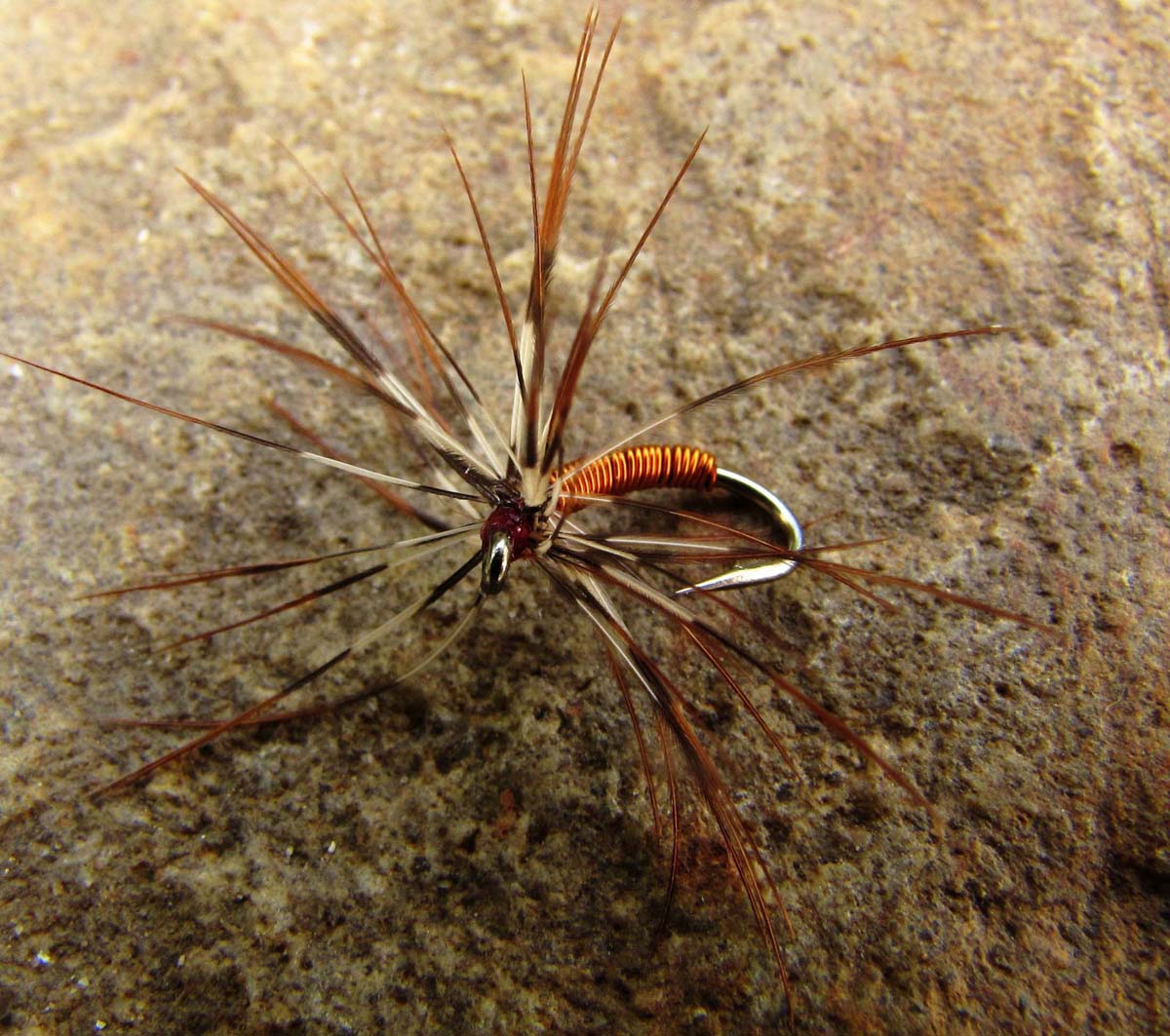
I am not sure what this imitates at all. I usually fish it under a dry fly, but when I find suitable water, I rig up a team of two or three and use short line nymphing methods to probe our small stream riffles and runs. This has often produced fish when not much else was working.
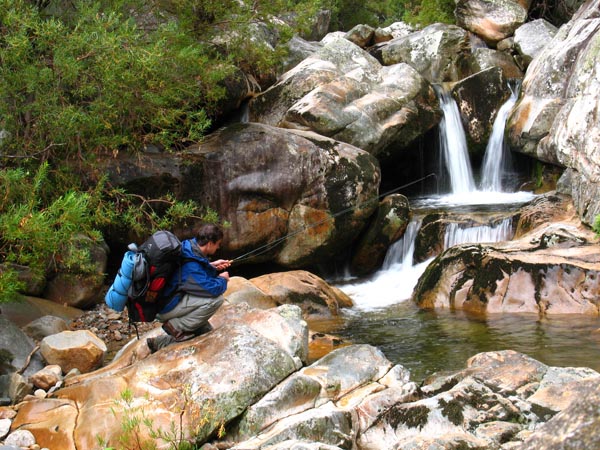
Gerald on the JDTs stream, Western Cape (Photo by Leonard Flemming)


